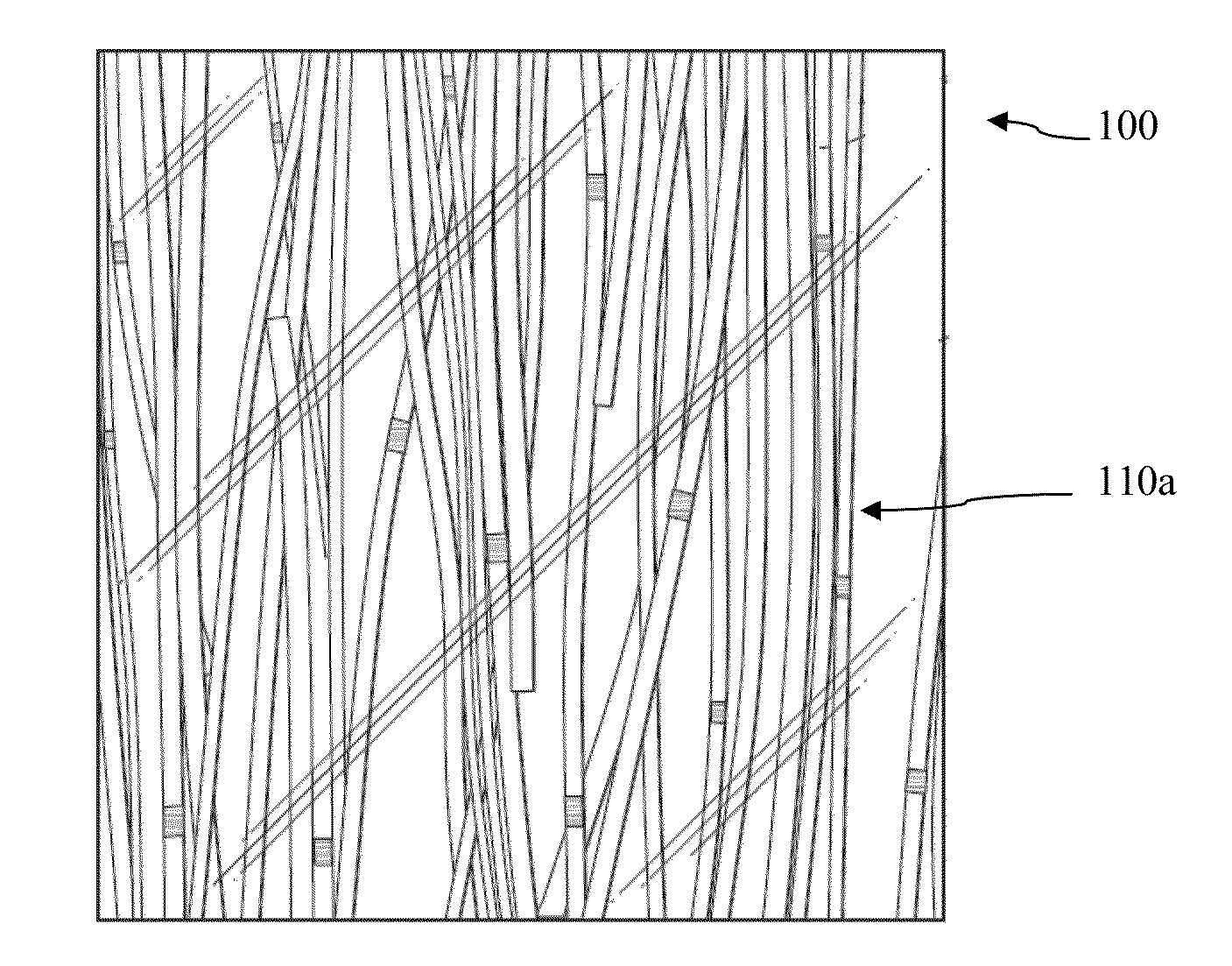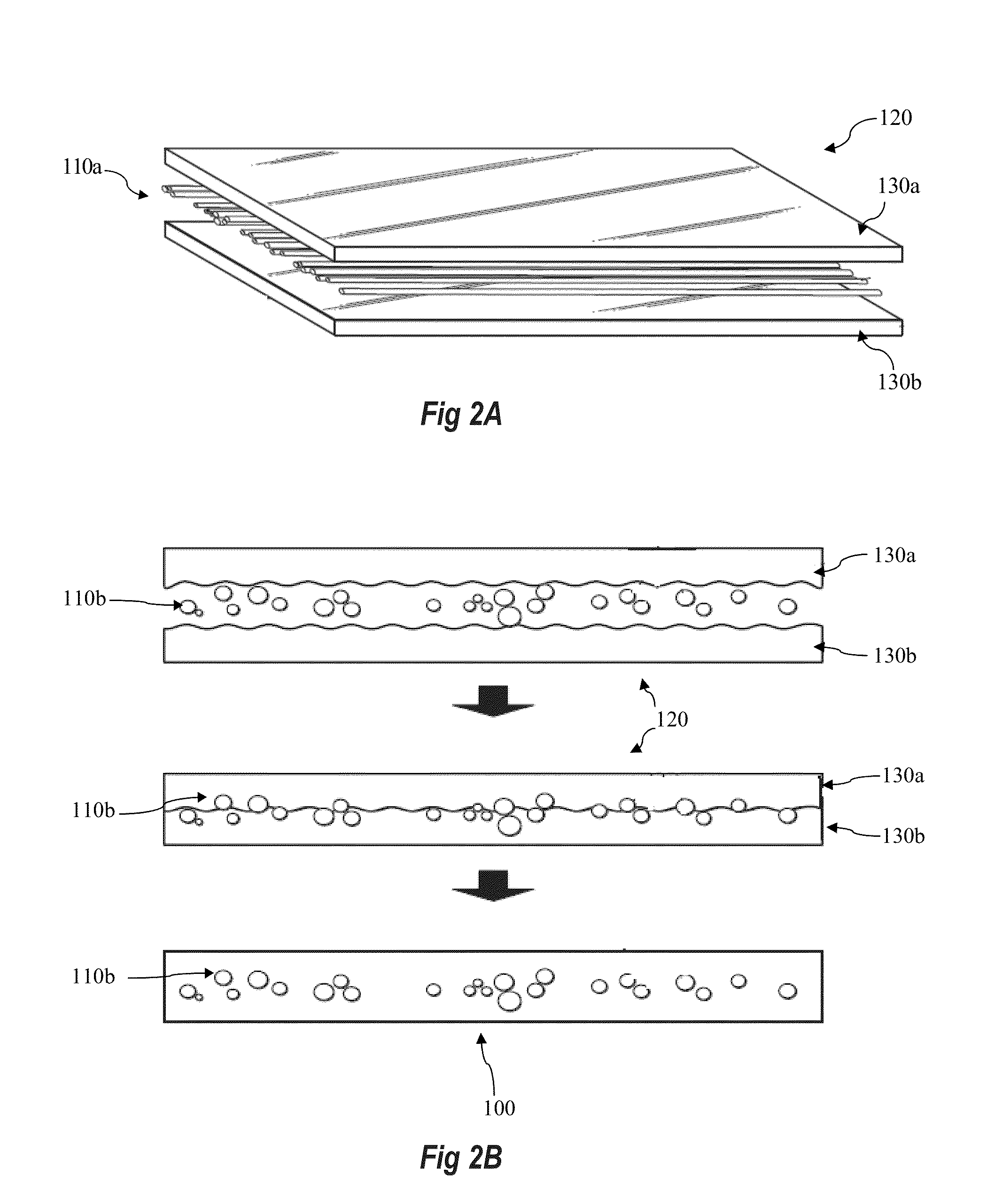Laminate panels produced from biopolymers
- Summary
- Abstract
- Description
- Claims
- Application Information
AI Technical Summary
Benefits of technology
Problems solved by technology
Method used
Image
Examples
Embodiment Construction
[0029]The present disclosure encompasses bio-based polymer laminate panels and related methods of manufacture. According to one embodiment, a laminate panel includes a first biopolymer resin sheet comprising a biopolymer resin, a second biopolymer sheet comprising a biopolymer resin material, both of which sheets are not derived from petroleum-based products. The sheets are laminated together to form a single unitary panel and each of the laminated sheets of the unitary panel are substantially transparent or translucent so as to exhibit substantially no clouding within the resin sheets. The panel structures provide a high degree of aesthetics, including optical clarity within the biopolymer resin sheets, and can be made with any number or type of interlayer materials or surface finishes.
[0030]According to a related method of manufacture, the first and second biopolymer resin sheets are positioned adjacent to one another (optionally with a decorative interlayer between) in a pre-lami...
PUM
| Property | Measurement | Unit |
|---|---|---|
| Temperature | aaaaa | aaaaa |
| Temperature | aaaaa | aaaaa |
| Temperature | aaaaa | aaaaa |
Abstract
Description
Claims
Application Information
 Login to View More
Login to View More - R&D
- Intellectual Property
- Life Sciences
- Materials
- Tech Scout
- Unparalleled Data Quality
- Higher Quality Content
- 60% Fewer Hallucinations
Browse by: Latest US Patents, China's latest patents, Technical Efficacy Thesaurus, Application Domain, Technology Topic, Popular Technical Reports.
© 2025 PatSnap. All rights reserved.Legal|Privacy policy|Modern Slavery Act Transparency Statement|Sitemap|About US| Contact US: help@patsnap.com



